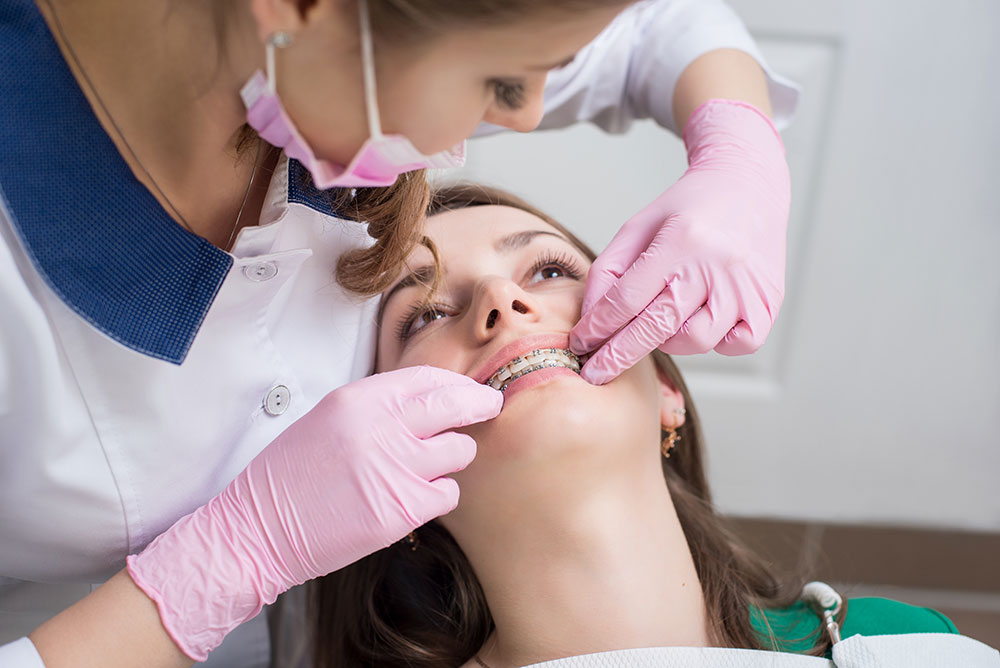Rumored Buzz on Causey + Hall Orthodontics
Rumored Buzz on Causey + Hall Orthodontics
Blog Article
Get This Report on Causey + Hall Orthodontics
Table of ContentsCausey + Hall Orthodontics for DummiesThe Ultimate Guide To Causey + Hall Orthodontics10 Easy Facts About Causey + Hall Orthodontics ExplainedLittle Known Questions About Causey + Hall Orthodontics.Rumored Buzz on Causey + Hall OrthodonticsCausey + Hall Orthodontics Things To Know Before You Buy
What is the difference between a dental practitioner and an orthodontist? All dental practitioners, consisting of orthodontists, deal with the teeth, periodontals, jaw and nerves.Orthodontists and dental practitioners both supply oral care for clients. Orthodontists can function in a dental workplace and provide the exact same therapies as various other dental experts. So you can think of both doctors who deal with gum tissue and teeth problems. The primary difference is that ending up being an orthodontist needs a certain specialized in dealing with the imbalance of the teeth and jaw.
An orthodontist is a dental professional that has actually gone through training to concentrate on the diagnosis, avoidance and treatment of irregularities in the jaw and teeth. Their training consists of correcting these existing conditions. They can additionally determine potential troubles in teeth positioning that might establish when conditions are left neglected. Orthodontists can aid individuals of any ages - https://medium.com/@rickeynewberry/about.
What Does Causey + Hall Orthodontics Do?
This consists of all the needed education and learning to become a basic dental practitioner. According to the American Student Dental Association (ASDA), it indicates you will need to have either a Medical professional of Medication in Dental Care (DMD) or a Medical Professional of Oral Surgery (DDS). To put it simply, orthodontists need to complete dental school and after that obtain an orthodontics specialty education.


When you have a healthy and balanced bite, you can speak, eat and consume correctly, therefore boosting your lifestyle. Apart from the orthodontist, we often see assistants collaborating with these oral experts in their centers. So, what is an orthodontist assistant called? They're appropriately referred to as orthodontic aides. They are specialized aides, and are educated this article to deal with dental gear and provide preventative oral health care.
A Biased View of Causey + Hall Orthodontics
At Advanced Orthodontics, we give patients with a holistic therapy experience. On top of that, we provide adjustable treatment schedules, adaptable settlement options and a fun, delightful experience. Call ( 480) 357-4900 today to find out more and timetable a consultation.
An orthodontist is a dentist trained to detect, prevent, and treat teeth and jaw abnormalities. Orthodontists work with individuals of all ages, from kids to adults.
, but not all dental practitioners are orthodontists. They focus on 2 locations: How to correctly and securely relocate teeth Exactly how to properly direct advancement in the teeth, jaw, and faceOnce an orthodontist has actually completed training, they have the option to come to be board licensed.
Get This Report about Causey + Hall Orthodontics
Misalignment, or malocclusion, is the most common reason individuals see an orthodontist - orthodontist. It is hereditary and is the result of size distinctions between the upper and lower jaw or between the jaw and teeth. Malocclusion brings about tooth congestion, an askew jaw, or uneven bite patterns. Malocclusion is usually treated with: Your orthodontist attaches metal, ceramic, or plastic square bonds to your teeth.
If you have only small malocclusion, you may have the ability to utilize clear dental braces, called aligners, rather than conventional dental braces. Some people need a headwear to aid move teeth into line with stress from outside the mouth. After braces or aligners, you'll need to put on a retainer. A retainer is a custom-made device that maintains your teeth in position.
They're usually used on children. They can create added area in the mouth without having to draw teeth. If you have a major underbite or overbite, you might require orthognathic surgical treatment (also called orthodontic surgical procedure) to extend or shorten your jaw. Orthodontists make use of cables, medical screws, or plates to support your jaw bone.
The Best Strategy To Use For Causey + Hall Orthodontics
During your initial orthodontic examination, you'll likely have: A dental examPhotos taken of your face and smileDental X-raysPanoramic (360 level) X-rays of your face and headImpressions to create molds of your teethThese tests will help your orthodontist understand just how to continue with your treatment. An orthodontist is a dentist who's had training to treat your teeth and jaw.
Orthodontists are dental professionals however not all dentists are orthodontists. Orthodontists are concentrated on your bite, or the means your teeth fit together, and the straightness of your teeth.
The Ultimate Guide To Causey + Hall Orthodontics
What specifically does an orthodontist do? Orthodontists are oral experts that concentrate on correcting irregularities in the teeth and jaws.

Clear aligners, like Invisalign, are a popular choice for clients looking for a much more discreet therapy option. These detachable trays are customized to progressively shift the teeth's setting. Headwear may be used together with braces or aligners to apply additional targeted pressures, particularly for correcting jaw inconsistencies. In cases of narrow jaws, palatal expanders can be made use of to produce area for proper tooth positioning.
Report this page